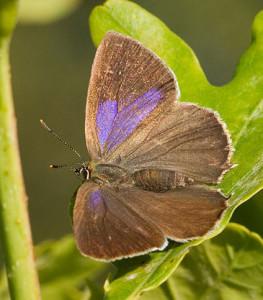Butterflies

This is the second article on Butterflies Ecology, the first can be found here
Ecology and Landscape design for creating habitat for Butterflies.
Butterflies ecology and what to do to help stem the trend of decline in butterflies, such as Small Tortoiseshells?There are a number of general habitat needs of butterflies.
By providing for these, butterflies can be conserved and encouraged.
The caterpillar stages require the correct food plants.
The adults require suitable plants for nectar.
Provide warm, sunny sheltered spots, preferably with a south facing aspect. Butterflies need this habitat to raise their body temperatures.
Trees, hedgerows and shrubs are needed for shelter too, as well as for food plants, but must be managed to still maintain open areas of ground for butterflies nearby.
Butterflies need a variety of different habitats depending on species;
Your landscape design for butterflies should include some of the following habitats.
Woodland edge habitat – perhaps you could get a grant for creating the right ecology
Wild flower meadow and tall grassland habitat.
Marshy, marginal habitats.
Scrub areas.
Habitat diversity and structural diversity.
Management should allow different vegetation heights will give insects different habitats to shelter and feed in. This will encourage plant species to mature, such as Hedge Garlic for the Orange Tip butterfly to lay its eggs on.
Diverse native hedgerows and copses will encourage a variety of different butterflies.
South facing slopes, valley bottoms and lowland areas are favoured. If the site is quite exposed, adding planting and a shelter belt/hedge will help.
Management of habitats needs to be carefully controlled; ideally, a maintenance plan or programme will help to coordinate activities.
If an area has a good colony of butterflies or has a rare species, be careful how you change any management of the site or the character of the site.
A single mature Oak tree can support a colony of the Purple Hairstreak; most occur in woods.
Different habitats of butterflies.
Woodland butterflies;
- Purple Hairstreak – feed on oak and spend most of their time on the mature 0ak tree canopy.
- Black Hairstreak – feed on old blackthorn thickets.
- White Admiral – need mature growth of old coppice woodland and Honeysuckle. Decline of coppicing helps this species of butterfly, so management for these butterflies needs to be carefully monitored.
Caterpillars of the Fritillaries depend on herbs, in particular Common Dog Violet, which grow after coppicing in woods, so restoring woods to coppice helps the following species;
- Pearl bordered Fritillary.
- Small pearl bordered Fritillary.
- Silver washed Fritillary.
Whilst grassland butterflies include;
- Brown butterflies which feed on grasses in woodland rides and other grassy places.
- Damp grassland rides – favour the Ringlet.
- Sunny open rides – favour the Meadow Brown.
- Wood white – feeds on legumes and needs 30% shade.
- Some Skippers also use woodland rides as habitat.
- The Blues favour more open grassland habitats with their food plants (see Butterflies 3.)
Other Habitat
Hedgerows support Gatekeeper and Orange Tip.
Hedgerows near woods support Brown Hairstreak.
Management – this depends on the type of flora, but generally, it is best to cut each ride in alternate years, this will allow plants to grow up and mature as different butterfly food plants.
So, all butterflies have specific niches and creating a variety of habitats is ideal for attracting butterflies. To discuss creating habitats for butterflies, go to Contact page
or leave a comment.
For a landscape design to encourage butterflies ring 01892 782200
